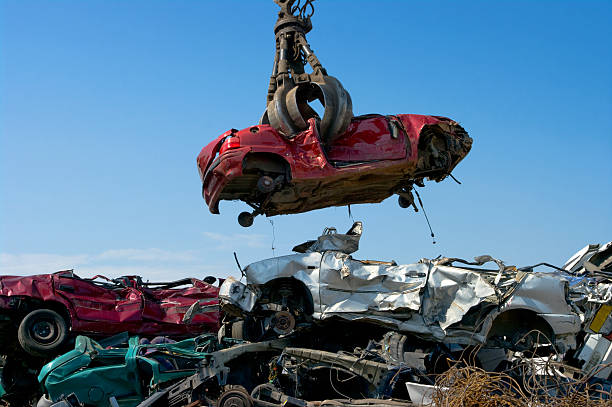Pressure Cleaning Valve: Function, Types, and Industrial Applications
In industrial maintenance, high-performance cleaning systems are essential for removing contaminants, scale, and buildup from machinery, pipelines, and processing equipment. One crucial component that enables these systems to operate safely and effectively is the Pressure Cleaning VALVE. These valves play a pivotal role in controlling the flow, direction, and intensity of pressurized fluids, ensuring efficient cleaning operations without damaging system components or compromising operator safety.
This article provides a detailed overview of pressure cleaning valves, covering their functions, types, construction materials, common applications, and benefits.
What Is a Pressure Cleaning Valve?
A pressure cleaning valve is a specialized flow control device used in high-pressure cleaning systems to regulate, redirect, or shut off the flow of pressurized fluids—typically water, steam, or cleaning chemicals. These valves are engineered to withstand extreme pressures and often operate in harsh environments, making durability and precision key design considerations.
Pressure cleaning valves are used in systems like:
- Industrial hydro jetting equipment
- High-pressure water blasters
- Steam cleaning lines
- Chemical injection systems
- Tank and pipe cleaning rigs
Whether used in manual cleaning setups or integrated into automated systems, pressure cleaning valves are essential for maintaining control over pressure and flow during operation.
Key Functions of Pressure Cleaning Valves
Pressure cleaning valves are responsible for several critical functions:
1. Flow Control
They regulate the flow rate of cleaning fluid to ensure proper coverage and cleaning efficiency without wasting water or chemicals.
2. Pressure Regulation
Some pressure cleaning valves include pressure relief or regulating features to maintain safe operating pressures, protecting equipment and operators from overpressure damage.
3. Directional Control
In systems with multiple cleaning nozzles or heads, directional valves help route flow to the desired location, often using a selector mechanism or automatic actuation.
4. Isolation and Shut-Off
These valves provide tight shut-off capabilities to isolate sections of the system during maintenance or when cleaning is not required.
Types of Pressure Cleaning Valves
There are several types of valves used in pressure cleaning applications. Each serves a specific function depending on system requirements and pressure ratings.
1. Ball Valves
Widely used due to their quick shut-off capability and ability to handle high pressure. Stainless steel ball valves are common in pressure cleaning rigs for water and chemical control.
2. Relief Valves (Pressure Safety Valves)
Designed to open automatically when pressure exceeds a set point, these valves prevent overpressure that could lead to equipment damage or failure.
3. Check Valves
Allow fluid to flow in only one direction, preventing backflow that could contaminate the source or damage the pump.
4. Needle Valves
Provide fine control over flow rates and are often used when precision is necessary, such as in chemical dosing or small cleaning jets.
5. Solenoid Valves
Electrically actuated and used in automated cleaning systems, solenoid valves offer precise on/off control and integration with programmable logic controllers (PLCs).
6. Selector or Diverter Valves
Used in multi-nozzle systems to switch the flow between different outlets or cleaning zones.
Materials and Construction
Pressure cleaning valves must be constructed from materials that withstand both high pressures and potentially corrosive cleaning agents. Common materials include:
- Stainless Steel (304/316): Offers excellent corrosion resistance and high strength, ideal for water and chemical-based systems.
- Brass: Common in medium-pressure systems and general-purpose applications.
- Carbon Steel: Suitable for high-pressure systems, especially in non-corrosive environments.
- Plastic (PVC or PTFE-lined): Used in chemical cleaning systems with lower pressure requirements and high chemical compatibility.
Seals and gaskets are typically made from materials like Viton, EPDM, or PTFE, chosen based on the chemical and temperature requirements.
Common Applications
Pressure cleaning valves are used across a variety of industries and applications, such as:
- Oil & Gas: Cleaning wellheads, pipelines, and heat exchangers using high-pressure water jetting systems.
- Food & Beverage: CIP (Clean-in-Place) systems rely on sanitary-grade pressure cleaning valves for internal pipe and tank cleaning.
- Marine & Shipping: Hull and deck cleaning with saltwater-resistant valves and high-pressure water blasters.
- Manufacturing: Cleaning industrial equipment, molds, or dies using controlled pressurized cleaning systems.
- Municipal Services: Sewer and drain jetting trucks use pressure cleaning valves to control flow and prevent overpressure.
- Automotive & Aviation: Parts washing systems and engine block cleaning rigs use these valves to control solvent or detergent flow.
Advantages of Pressure Cleaning Valves
✅ Enhanced Safety
Pressure regulation and relief features protect workers and equipment from unexpected pressure surges.
✅ Precise Control
Operators can adjust flow and pressure to match the specific cleaning task, reducing waste and improving efficiency.
✅ Durability
Designed to withstand continuous high-pressure use in harsh environments, reducing the frequency of maintenance and replacement.
✅ Versatility
Pressure cleaning valves can be used in both manual and automated systems, across many industries and media types.
✅ Customization
Valves can be tailored in terms of pressure rating, material, actuation type (manual, pneumatic, electric), and size to meet specific operational needs.
Conclusion
Pressure cleaning valves are critical components in high-pressure and industrial cleaning systems. By offering precise control over flow and pressure, they contribute to effective cleaning, equipment protection, and operational safety. With a range of types and materials available, these valves can be adapted to virtually any industrial cleaning requirement—from basic hose systems to complex automated CIP installations.
Whether you’re designing a high-pressure cleaning skid or upgrading a sanitation line, selecting the right pressure cleaning valve ensures optimal performance, longer equipment life, and safe operations.
